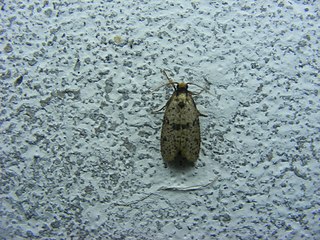Related Research Articles

In mathematics, convolution is a mathematical operation on two functions that produces a third function that expresses how the shape of one is modified by the other. The term convolution refers to both the result function and to the process of computing it. It is defined as the integral of the product of the two functions after one is reversed and shifted. The integral is evaluated for all values of shift, producing the convolution function.

The International Phonetic Alphabet (IPA) is an alphabetic system of phonetic notation based primarily on the Latin script. It was devised by the International Phonetic Association in the late 19th century as a standardized representation of speech sounds in written form. The IPA is used by lexicographers, foreign language students and teachers, linguists, speech–language pathologists, singers, actors, constructed language creators and translators.

In mathematics, a Fourier transform (FT) is a mathematical transform that decomposes functions depending on space or time into functions depending on spatial or temporal frequency, such as the expression of a musical chord in terms of the volumes and frequencies of its constituent notes. The term Fourier transform refers to both the frequency domain representation and the mathematical operation that associates the frequency domain representation to a function of space or time.

The Group of Eight (G8) was an inter-governmental political forum from 1997 until 2014. It had formed from incorporating the country of Russia into the Group of Seven, or G7, and returned to its previous name after Russia was disinvited in 2014.

Christopher George Latore Wallace, better known by his stage names the Notorious B.I.G., Biggie Smalls, or simply Biggie, was an American rapper and songwriter. Rooted in the New York rap scene and gangsta rap traditions, he is widely considered one of the greatest rappers of all time. Wallace became known for his distinctive laidback lyrical delivery, offsetting the lyrics' often grim content. His music was often semi-autobiographical, telling of hardship and criminality, but also of debauchery and celebration.

In thermodynamics, the Gibbs free energy is a thermodynamic potential that can be used to calculate the maximum reversible work that may be performed by a thermodynamic system at a constant temperature and pressure. The Gibbs free energy (, measured in joules in SI) is the maximum amount of non-expansion work that can be extracted from a thermodynamically closed system. This maximum can be attained only in a completely reversible process. When a system transforms reversibly from an initial state to a final state, the decrease in Gibbs free energy equals the work done by the system to its surroundings, minus the work of the pressure forces.
This gallery of sovereign state flags shows the national or state flags of sovereign states that appear on the list of sovereign states. For other flags, please see flags of active autonomist and secessionist movements, flags of extinct states and gallery of flags of dependent territories. Each flag is depicted as if the flagpole is positioned on the left of the flag, except for those of Iran, Iraq and Saudi Arabia which are depicted with the hoist to the right.

The Group of Seven (G7) is an inter-governmental political forum consisting of Canada, France, Germany, Italy, Japan, the United Kingdom and the United States. Its members are the world's largest IMF-advanced economies and wealthiest liberal democracies; the group is officially organized around shared values of pluralism and representative government. As of 2018, the G7 accounts for close to 60% of global net wealth ($317 trillion), 32–46% of global gross domestic product (GDP) and for about 770 million people or 10% of the world's population. Most members are great powers in global affairs and maintain mutually close economic, military, and diplomatic relations.

The G20 is an intergovernmental forum comprising 19 countries and the European Union (EU). It works to address major issues related to the global economy, such as international financial stability, climate change mitigation, and sustainable development.

The Google logo appears in numerous settings to identify the search engine company. Google has used several logos over its history, with the first logo created by Sergey Brin using GIMP. A revised logo debuted on September 1, 2015. The previous logo, with slight modifications between 1999 and 2013, was designed by Ruth Kedar, with a wordmark based on the Catull, an old style serif typeface designed by Gustav Jaeger for the Berthold Type Foundry in 1982.

Eriocottidae or Old World spiny-winged moths is a family of insects in the order Lepidoptera whose position relative to other members of the superfamily Tineoidea is currently unknown. There are two subfamilies, Compsocteninae and Eriocottinae.

In telecommunications, 5G is the fifth generation technology standard for broadband cellular networks, which cellular phone companies began deploying worldwide in 2019, and is the planned successor to the 4G networks which provide connectivity to most current cellphones. 5G networks are predicted to have more than 1.7 billion subscribers worldwide by 2025, according to the GSM Association. Like its predecessors, 5G networks are cellular networks, in which the service area is divided into small geographical areas called cells. All 5G wireless devices in a cell are connected to the Internet and telephone network by radio waves through a local antenna in the cell. The main advantage of the new networks is that they will have greater bandwidth, giving higher download speeds, eventually up to 10 gigabits per second (Gbit/s). Due to the increased bandwidth, it is expected the networks will increasingly be used as general internet service providers for laptops and desktop computers, competing with existing ISPs such as cable internet, and also will make possible new applications in internet of things (IoT) and machine to machine areas. 4G cellphones are not able to use the new networks, which require 5G enabled wireless devices.
"Eriocottis euryphracta" is a moth of the family Yponomeutidae. It is found in Australia. Research has concluded it does not belong in the genus Eriocottis, but it has not been moved to another genus yet.
Eriocottis fuscanella is a moth of the family Eriocottidae. It was described by Philipp Christoph Zeller in 1847. It is found in Italy and on Sardinia, Sicily and Malta.
Eriocottis paradoxella is a moth in the Eriocottidae family. It was described by Staudinger in 1859. It is found in France, Spain and Portugal.
Eriocottis andalusiella is a moth in the Eriocottidae family. It was described by Rebel in 1901. It is found in Portugal and Spain.
Eriocottis flavicephalana is a moth in the family Eriocottidae. It was described by Syuti Issiki in 1930. It is found in Taiwan.
Eriocottis pyrocoma is a moth in the family Eriocottidae. It was described by Edward Meyrick in 1891. It is found in Algeria.
Eriocottis hispanica is a moth in the Eriocottidae family. It was described by Zagulajev in 1988. It is found in Spain and Portugal.
References
- ↑ Beccaloni, G.; Scoble, M.; Kitching, I.; Simonsen, T.; Robinson, G.; Pitkin, B.; Hine, A.; Lyal, C., eds. (2003). "Eriocottis maraschensis". The Global Lepidoptera Names Index . Natural History Museum . Retrieved May 3, 2018.